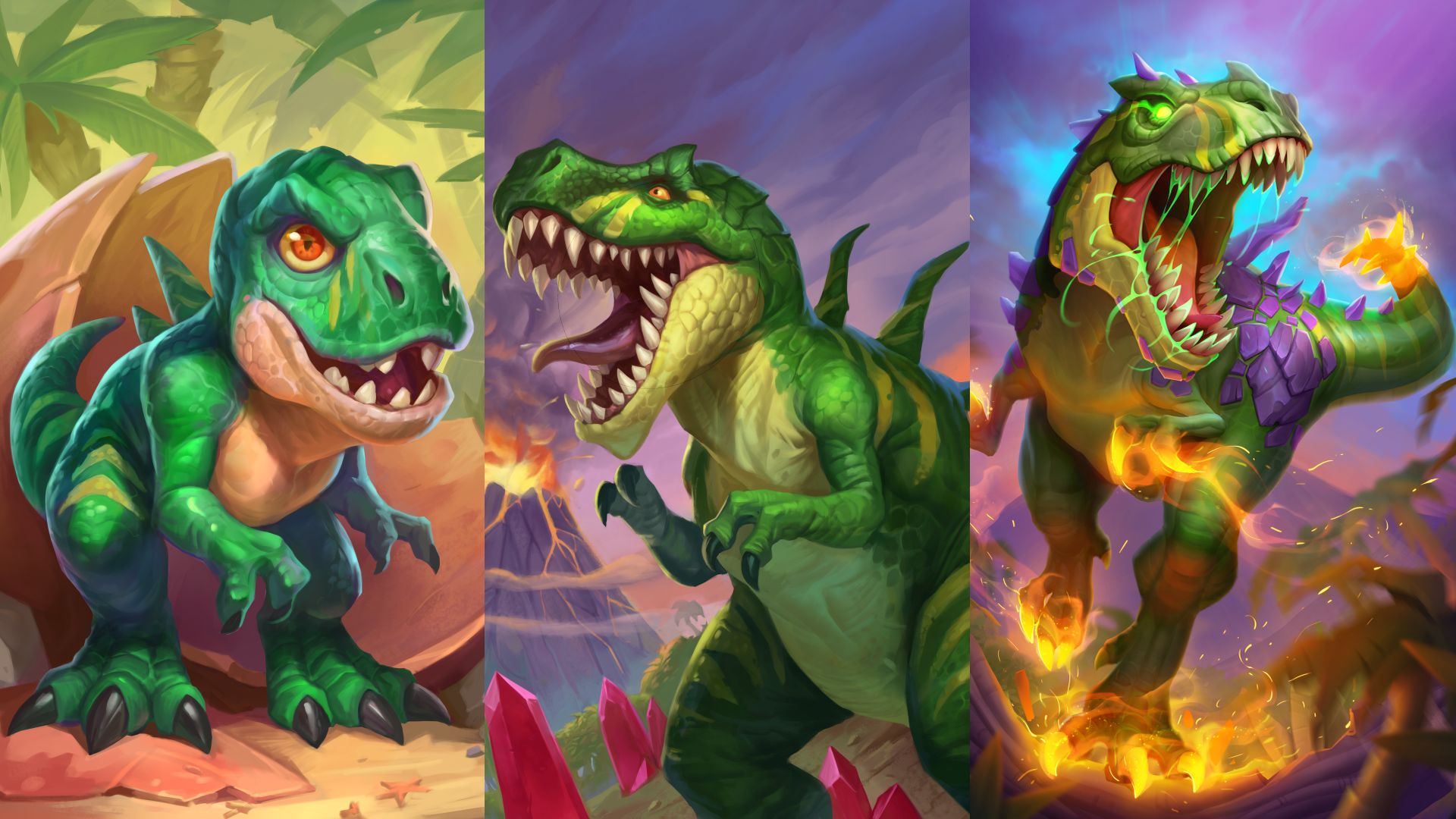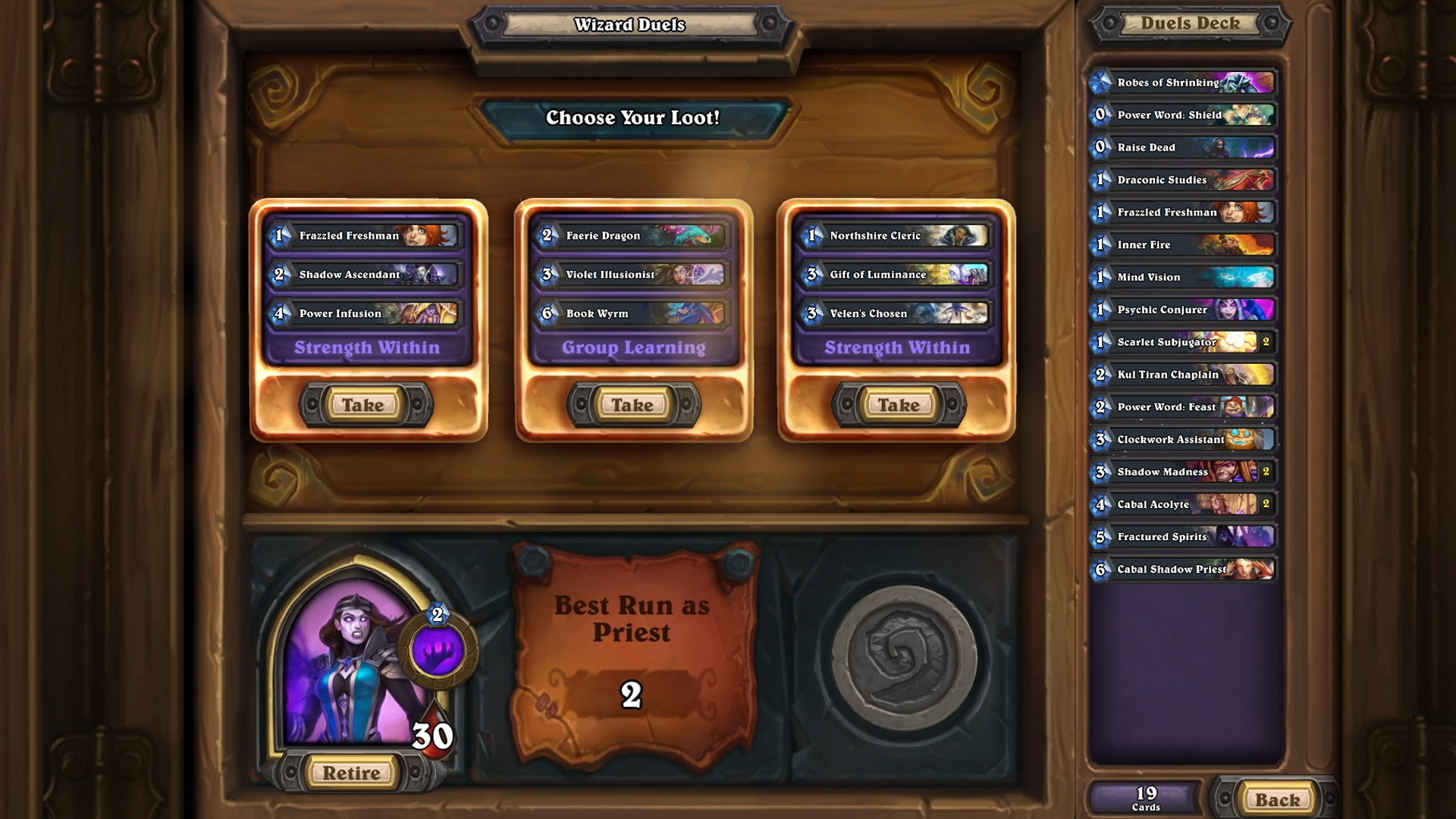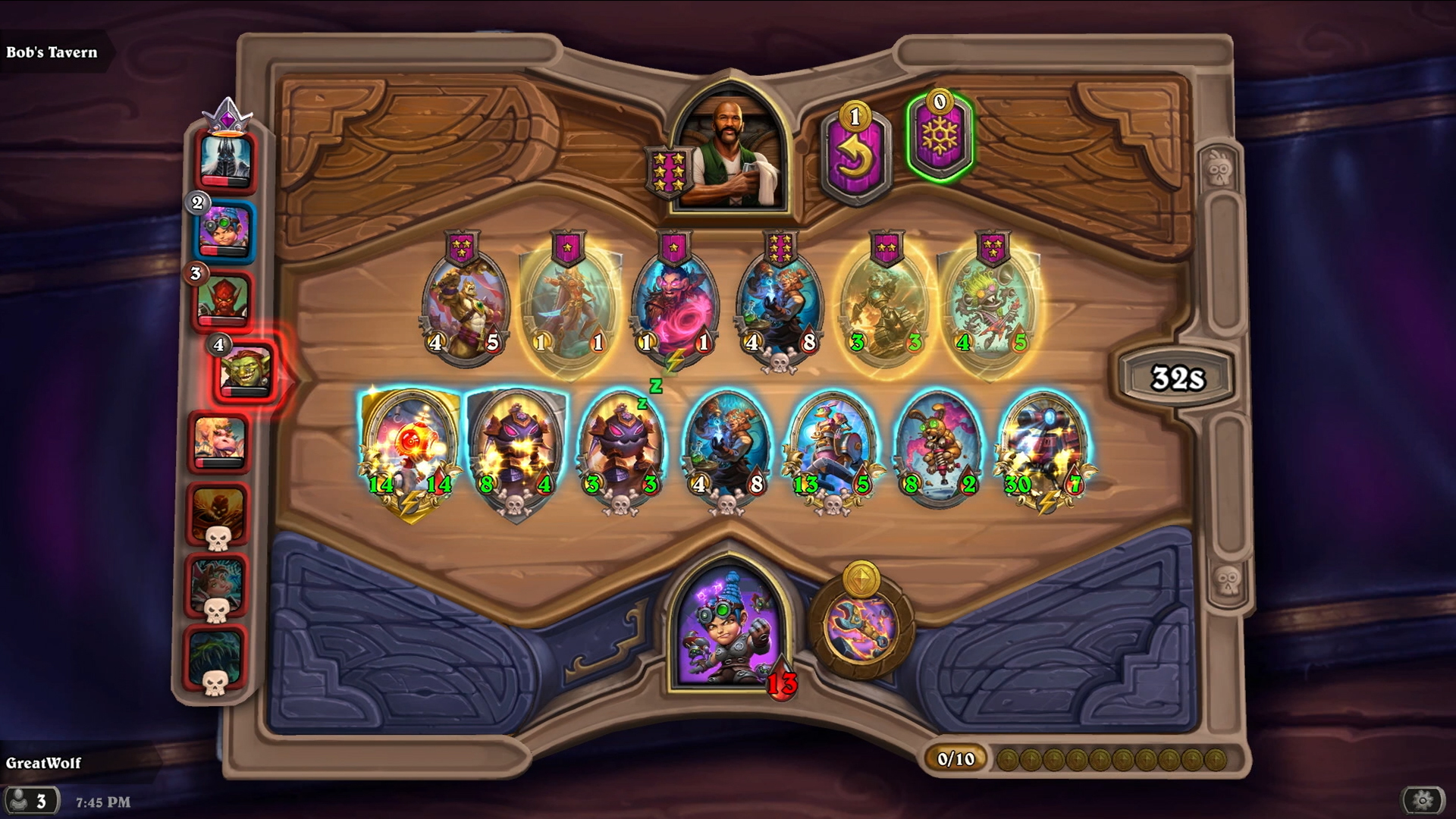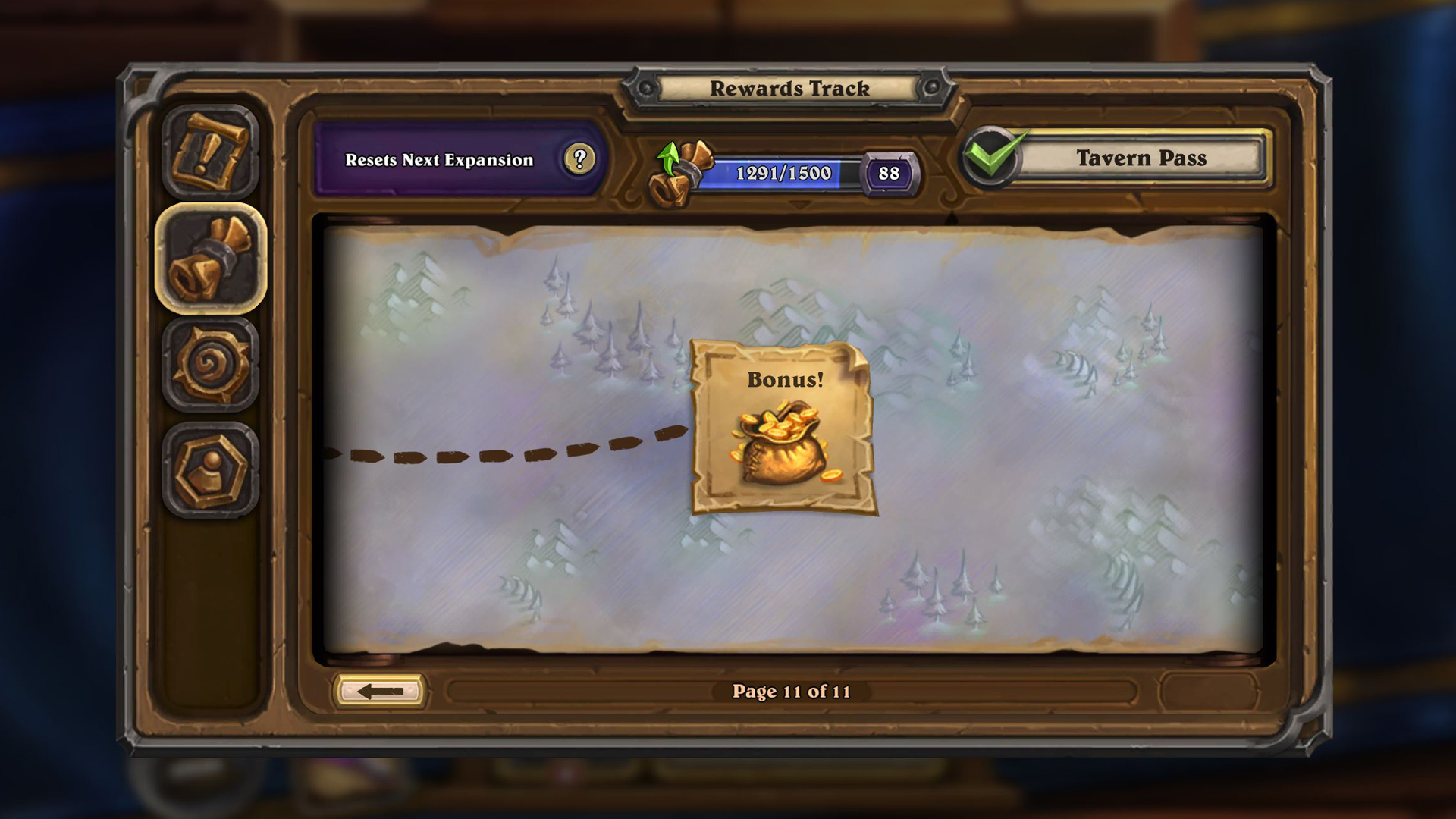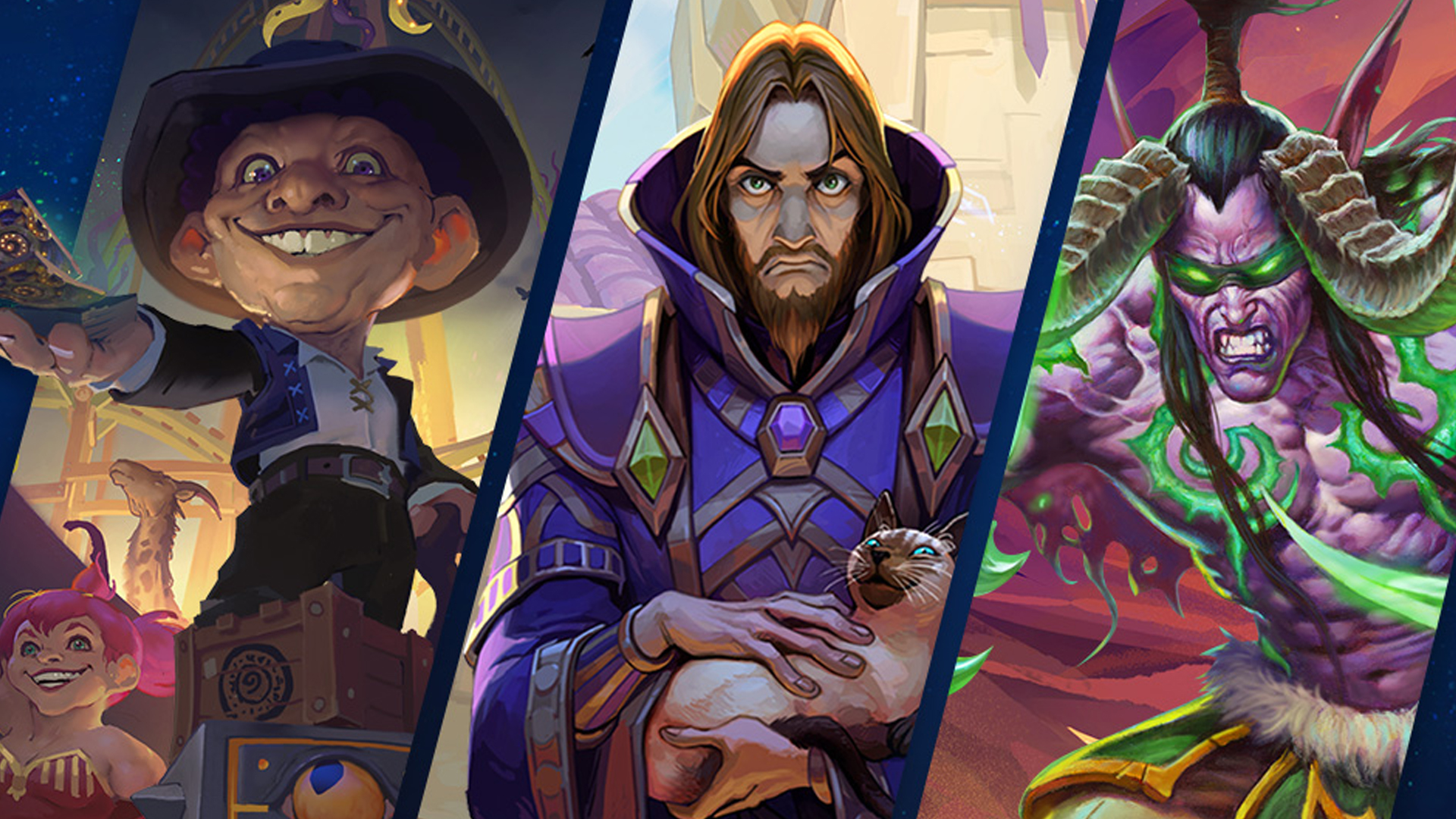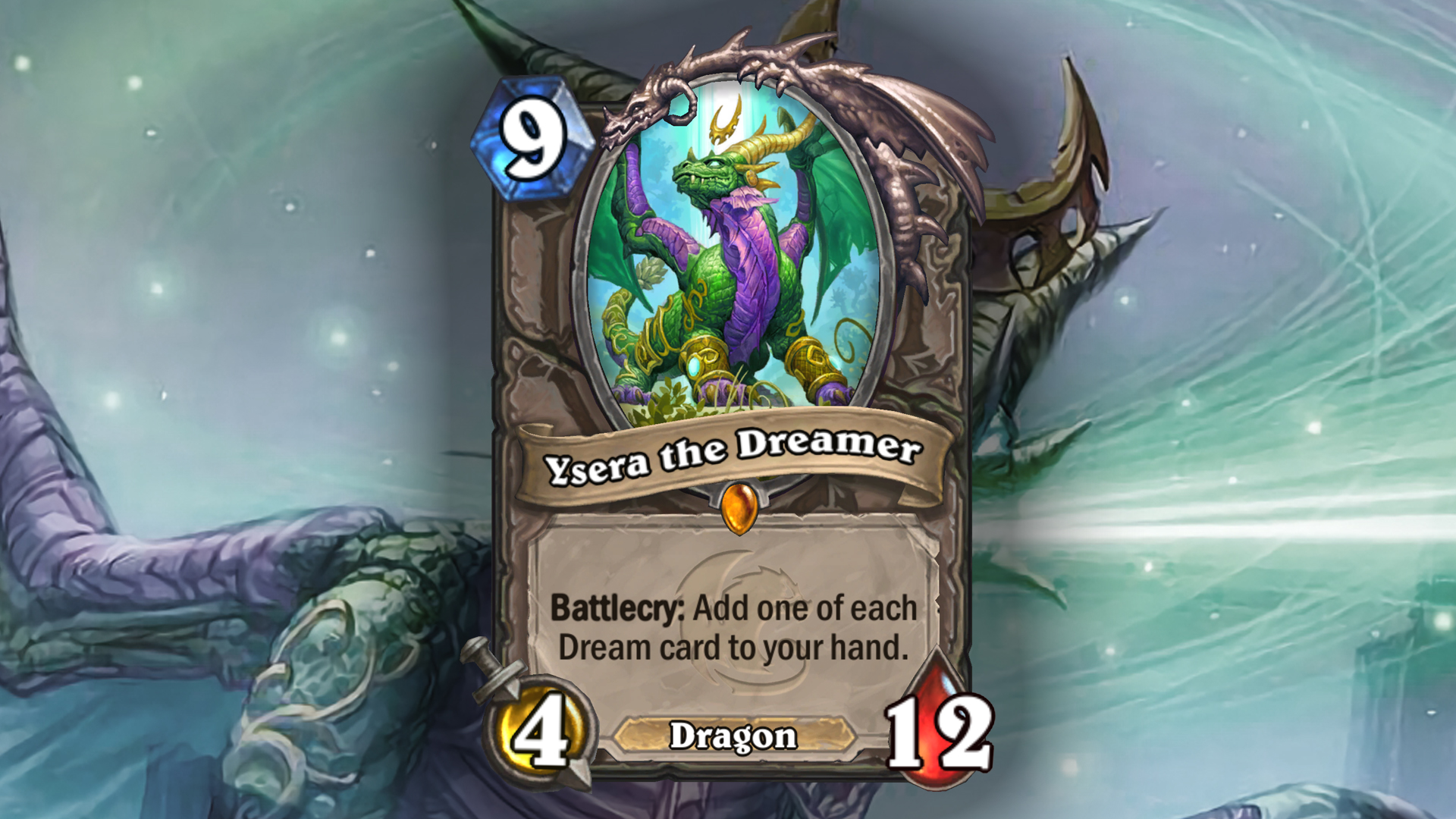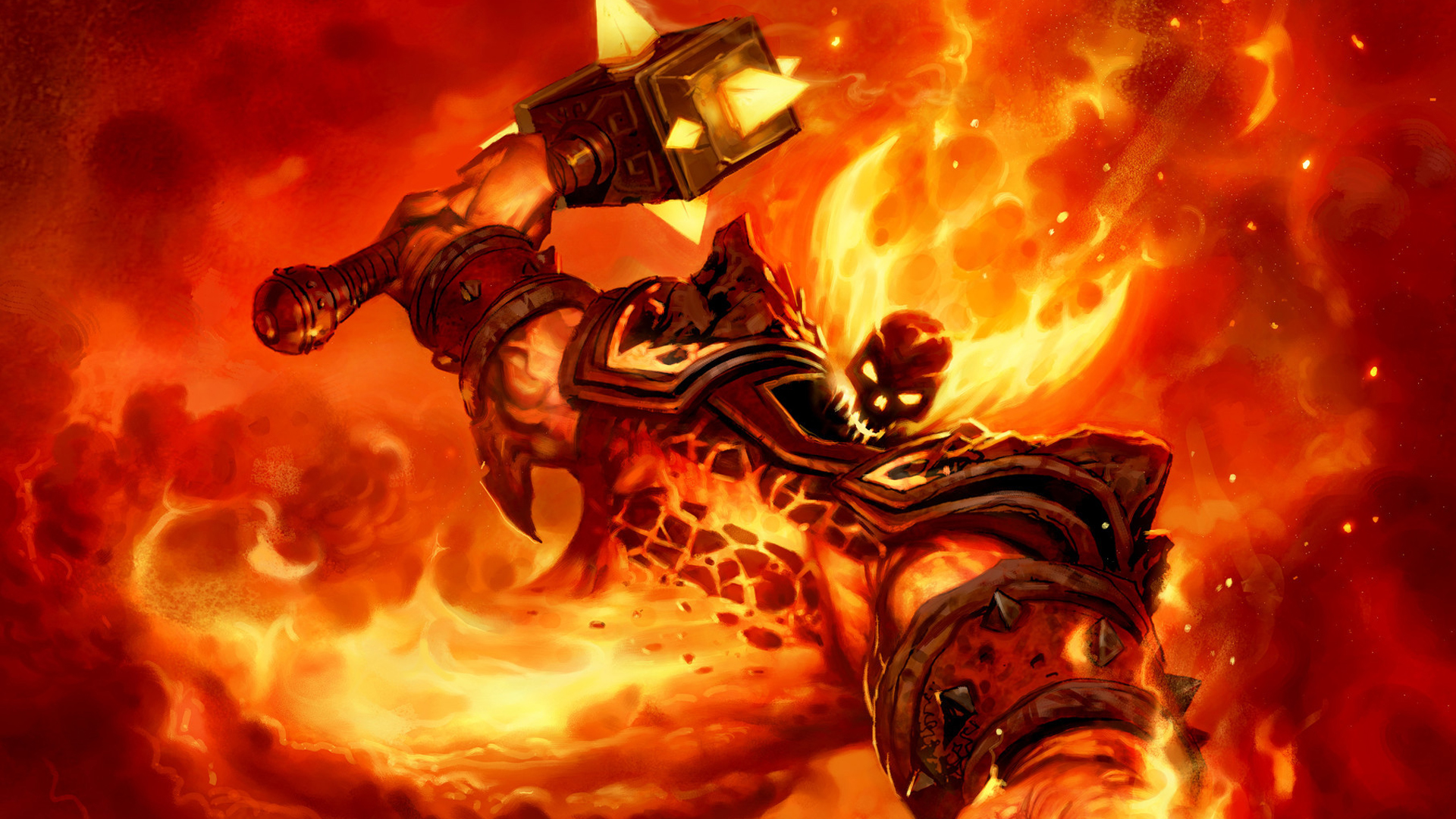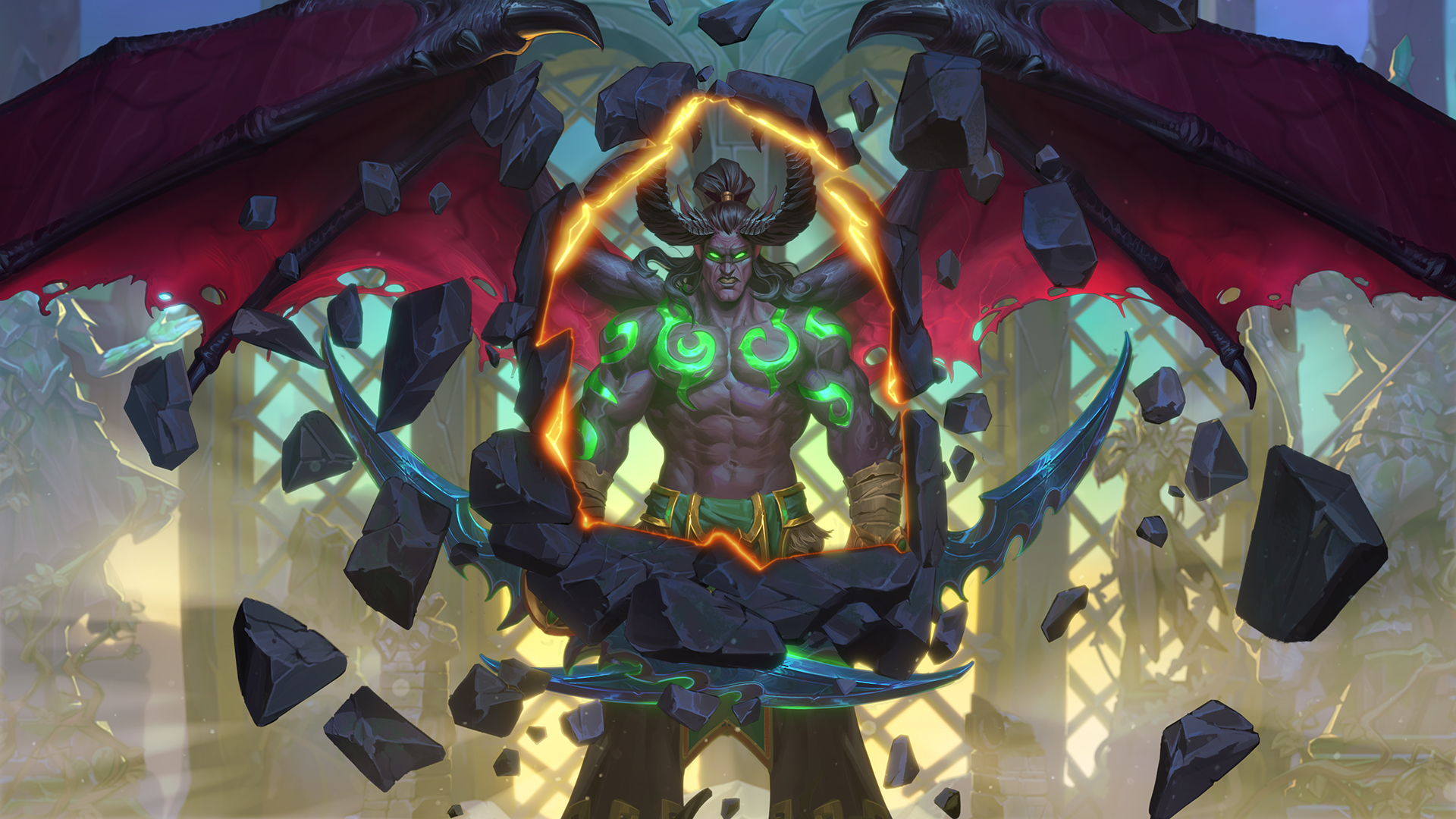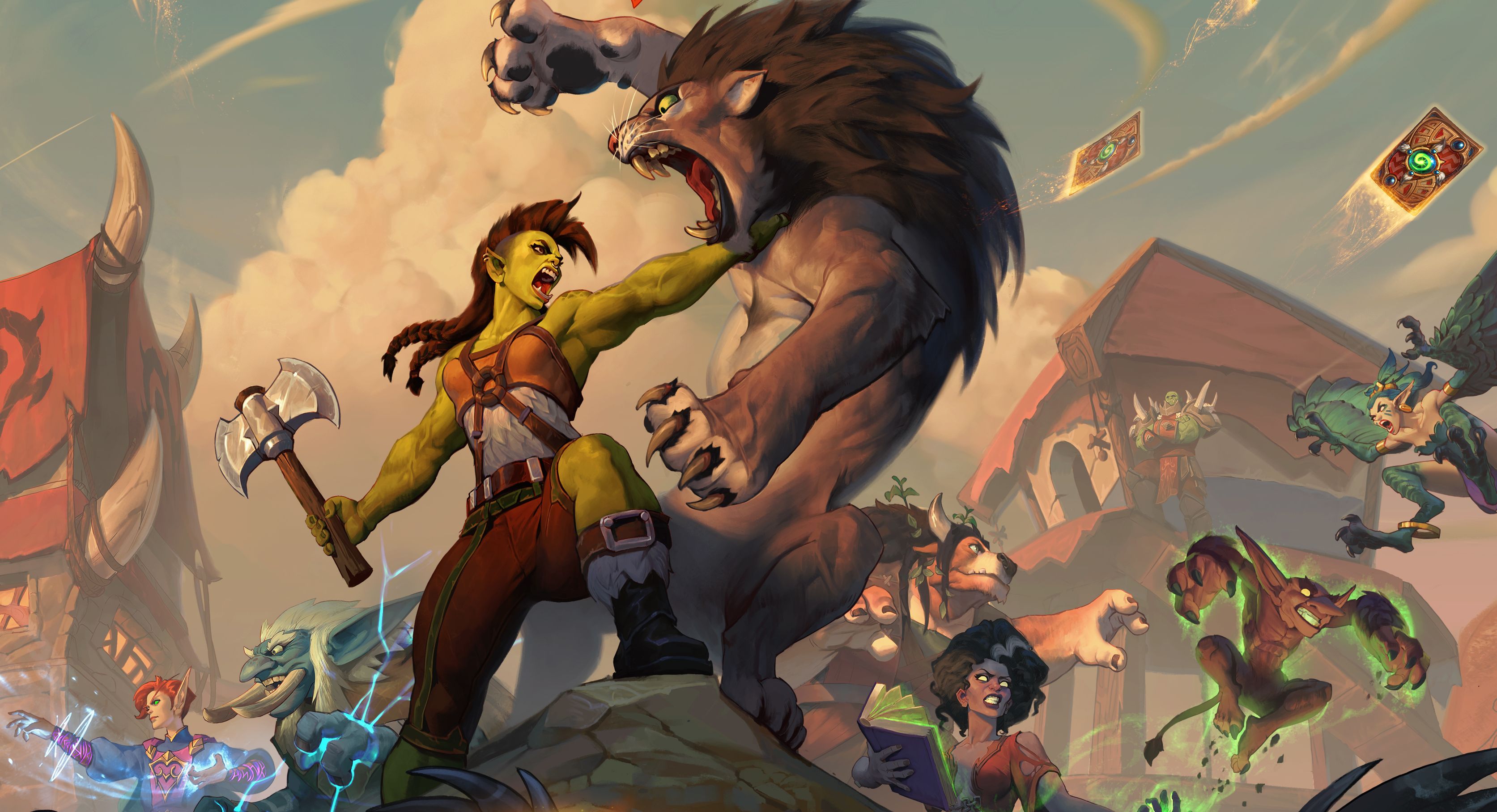Hearthstone devs talk Core Set, Classic and Mercenaries mode, and why Duels isn't dead
We spoke with Ben Lee and Nathan Lyons-Smith about all the BlizzConline announcements and much more.
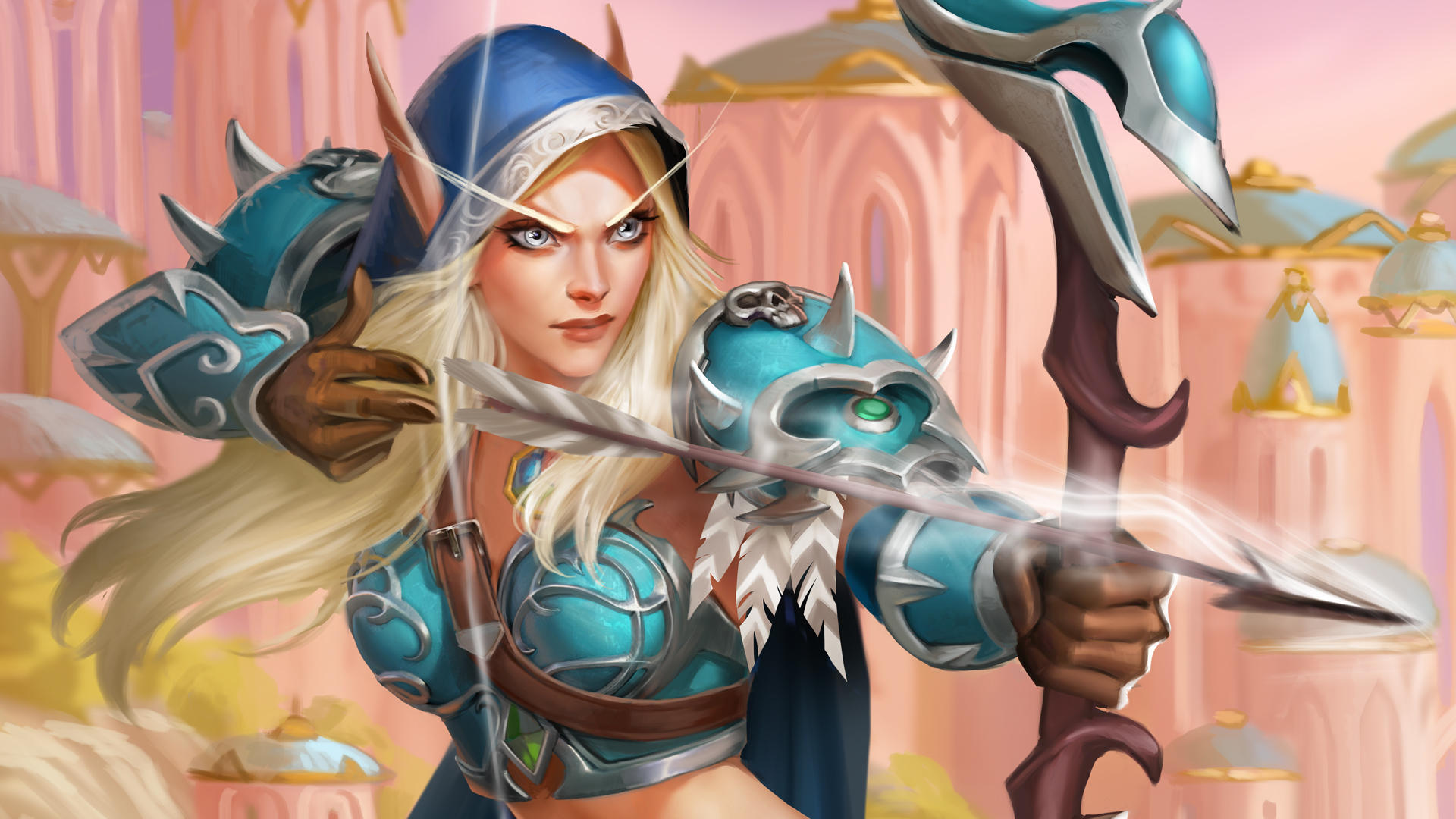
Selected Highlights:
- Ragnaros will likely return to the Core set in the future, but Sylvanas is less certain because she makes players feel bad
- The Duels mode isn't dead
- Battlegrounds won't necessarily become Hearthstone's biggest mode
- If players love Hearthstone Classic it will influence future expansions
- Blizzard knows it went too far with card generation from Lackeys
- There's no Hero card in Forged in the Barrens
We've been writing for over a year now that the current Hearthstone development team is more aggressive about making big changes and introducing new content than at any point in the game's history. Obviously, that's resulted in some equally big controversies—the startling power of Demon Hunter, the game's first new class since, and the violent reaction to the new rewards track—to name two, but it's also resulted in a game that's more dynamic and exciting. You only have to look at the explosive success of the Battlegrounds mode, which now rivals and often exceeds Standard for player hours logged, to see how much has changed.
No surprise, then, that today's BlizzConline opening ceremony saw a raft of announcements. In addition to details of the new Horde-flavoured expansion, Forged in the Barrens, we also heard about an entirely new mode, Mercenaries, which is coming later this year. Oh, and got a ton of detail about the changes being made as part of the new Core set, including the reimagined Dragon aspects Maylgos, Ysera and Deathwing. To discuss all that and more I spoke with game director Ben Lee and production director Nathan Lyons-Smith. I've broken out a few key points in the bullet points above to whet your appetite, because it's a chunky read. You may even wish to pour yourself an ale, I hear the bartender here is friendly.
New Mercenaries mode
PC Gamer: Can you tell me a bit more about what Mercenaries is?
Ben Lee: Mercenaries is a brand new mode for us—it's a big endeavour. It's inspired by strategy, RPG mechanics, and roguelikes. It's about collecting characters, levelling them up and having awesome adventures with them. It's based around the big characters of the Warcraft licence. So you can expect to see Sylvanas Windrunner, Ragnaros, and lots of the titans of our lore—but also some fun and friendly characters from Hearthstone, too. King Krush has always been a fan favourite in Hearthstone. There's some pretty cool character progression in terms of the way the art works. We're not showing too much gameplay right now, but there's definitely going to be a lot more information as we go down the road towards the launch of the mode.
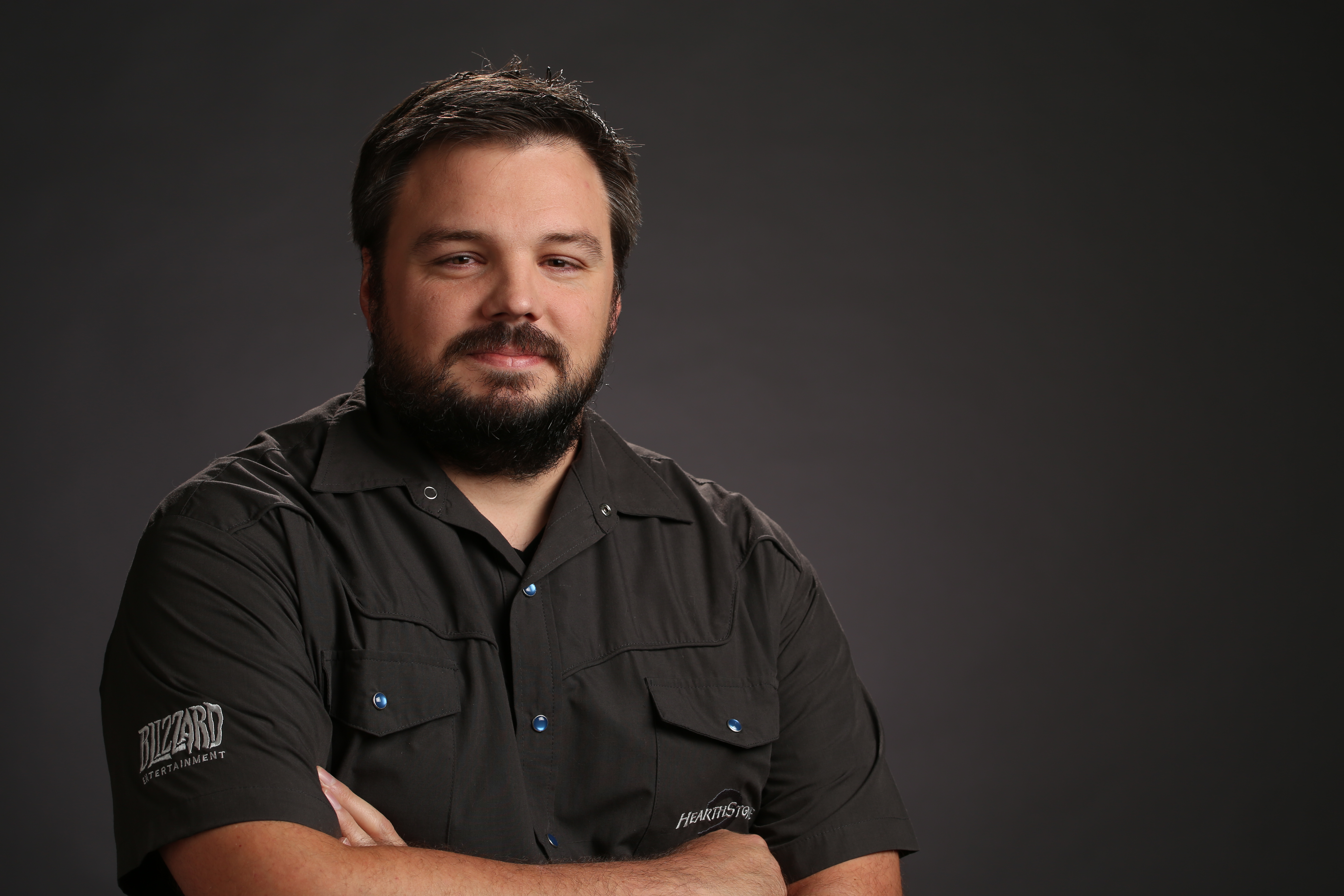
Before joining Blizzard, Hearthstone's game director spent time working for CD Projekt Red on Gwent.
When you say roguelike, would it be fair to expect a Slay The Spire-type experience? Will it be the player versus AI and you're building a war band?
BL: That's definitely part of it. There's a PvE side to it, and also a PvP side of it. The big difference between our take and other roguelikes is that the progression is permanent. So, say you're taking King Krush and Rexxar through a level, they gain experience and they get to keep that. They have skills and abilities, and you can get item drops that enhance your abilities as you go. You keep all of that stuff. You're going through this progression of levels with bosses until you get to the end game when you hit the maximum level. The game then becomes a little bit different. [At that point ] it's not really about level progression, it's more about skill, meta counters, and so on.
Keep up to date with the most important stories and the best deals, as picked by the PC Gamer team.
You play against AI and real people?
BL: When you're in a level you'll be playing against the AI, but you can play against other players. You can queue PvP with this.
Hearthstone as a card game platform
Do you increasingly see Hearthstone as a platform for card experiences? Previously, the game was almost entirely about Standard, but it feels very different now. It's like you're trying to create a chocolate box of different card things. Is that fair?
BL: Yes, I think it's definitely what we've been doing. The reality is that Hearthstone is seven years old now. We still have millions of people playing the game every day, but I think in this day and age—especially now—people are looking for fresh experiences.
It's super competitive for entertainment out there. We don't only compete with other games, we compete with services like Netflix and Amazon Prime for people's time. Entertainment is so easily accessible. So, as a team, as a leadership group, there's this demand to do something new and exciting. We also see that in our player behaviour. A huge portion of our players love to play what's new. They'll engage with it, they'll consume it, and then they want something else. We're trying to make sure that our game remains relevant, and that there's always something fun and interesting to do.
Nathan Lyons-Smith: You call it a platform for card games, and internally that's what we call it as well. We're building a bunch of different types of gameplay using the core Hearthstone mechanics.
Surely at some point you hit a critical mass of experiences where it becomes tricky to support all of them? At what point do you say 'alright, that's had its moment in the sun, let's move away from it'? Or do you commit to having modes like Arena and Duels in perpetuity?
BL: I think there's definitely a limit, and I think we're pretty close to that right now. With the addition of Classic, and also Mercenaries in the future, we're in a pretty good space. A lot of what we've been doing over the last couple of years is creating these modes and experiences that give us content delivery systems, so we can always keep the game active.
Regarding Duels, one of the things that I think players misunderstand is when a game mode isn't as popular as Standard or Battlegrounds, there's this perception that it's dead.
Ben Lee, Hearthstone game director
If you come into the expansion at the beginning of the cycle, you have all these new cards to play with, then the next update is a major Battlegrounds patch. Beyond that, there's a mini set, then we get back into the pre-launch hype cycle of the next expansion. Along the way there's single player content, additions for Duels, balance changes—there's tons of different stuff that we're doing. So, with that cadence, we need these different modes to make it happen. That's not even thinking about achievements and the reward track, and how those things link into keeping the game active and fun.
If something isn't working out, it's definitely something we'll look at and reflect on. Regarding Duels, one of the things that I think players misunderstand is when a game mode isn't as popular as Standard or Battlegrounds, there's this perception that it's dead. But there were a million games of that game mode played yesterday! That's taking Duels as an example—it's a huge amount of games played. Obviously, our premier modes, which I'd say are Standard and Battlegrounds, are the dominant modes—but Arena, Wild, and Duels all have healthy player bases, they're just obviously not the same size.
Battlegrounds
At what point does Battlegrounds become the main mode of Hearthstone?
BL: I don't particularly think that happens. It goes back to what I mentioned a moment ago. There are huge spikes in engagement when something new comes out. For example, when we launch an expansion, for the initial period, Standard is the dominant game mode, even above Battlegrounds. When Battlegrounds content comes out, it's dominant.
Due to the reality of data collection and the way things work, metas are established incredibly quickly. I think that's just kind of the lifecycle of the game and how it has trended. That's part of the reason why we introduced mini sets, to shake things up and give players different experiences. What we really see is that players love to engage with what's new, and that's part of the reason why we've embraced that philosophy and steered our development around it.
Rewards track
The season pass had a hot reception when it came in. We're about to get the second big iteration of it. Can we expect big structural changes in terms of the rewards, or is it going to be roughly the same as now?
NLS: When we launched... definitely a hot reception. I think that's a good way to put it, Tim, appreciate that. [Laughs] What we had always planned to do was take a look at the data results on our side post-launch, and then make changes as a result of that.
We looked at the community sentiment and how players are interacting with the system, quickly made a few minor changes, and then scheduled a few more in December. Where we've landed now, we're actually reasonably happy with delivering on our goal; people meaningfully getting more rewards and Gold. As you've seen in the community, they're starting to also realise that they're getting a whole lot more, which feels good to us.
There are some quality of life things we're doing, but by and large, the structure is there. We're happy that it is a single place where players go to progress, get rewards, and do whatever it is they want to do in Hearthstone.
BL: I think the biggest change to talk about is something that Dean [Ayala] has already hinted at on Twitter, and in our follow up communication for the rewards track system. During the first 50 levels of the track, the progression per level can feel like it takes too long. It's not that the rewards are not enough, the reality is you have like 5000 experience to get 300 Gold—that could just be 2500 experience each way to get 150 Gold each way.
There are obviously some slight complications there because you can't split a card back in half. So, we're adding some rewards to the track, which we think players will like in addition to that. [In my] personal experience, I think the most gold I've ever earned in an expansion is about 6000, and I have over 11,000 Gold right now as a player, because I've played so much. I'm well above level 100. So, for me, the system has been great for my behaviour, but it's also been great for my economy. Especially when we get towards the end of the reward track cycle, I think a lot of players are really going to start to notice that.
Standard
My overall feedback is that I like the ability to earn those cosmetics but, fundamentally, the game still feels very expensive… Where do you feel you are with regards to the overall cost of keeping up with Standard?
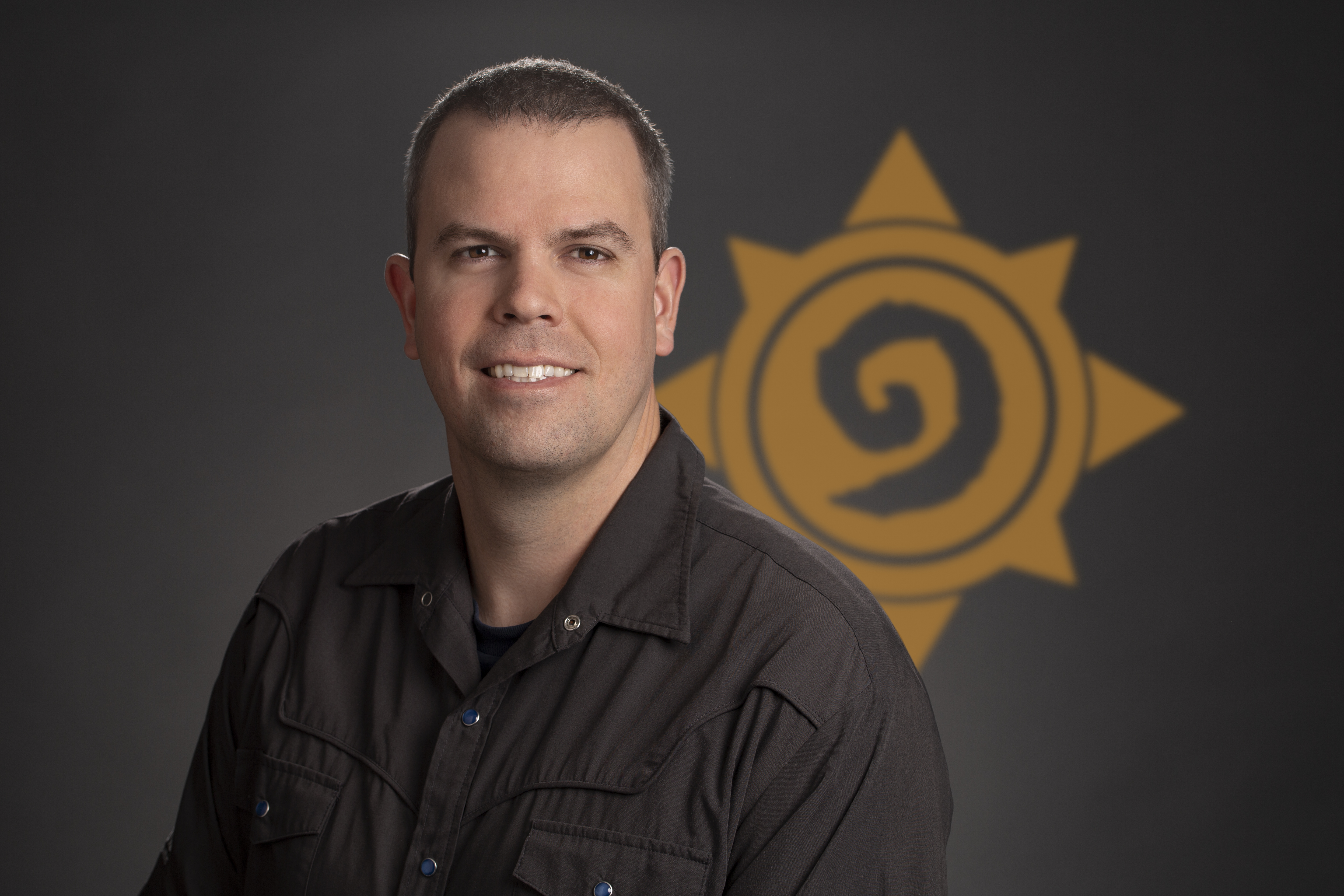
Hearthstone's production director previously worked as product leader on the Battle.net team.
NLS: There's been a couple of things we've changed in the last 12 months. When we put in duplicate protection for Legendary cards way back in the day, at that point I felt, 'hey, I'm going in harder'. I was really proud that we were able to roll out [duplicate protection] for all rarities in March of last year. That's meaningfully helped shift the cost down.
I think the mini set being available for Gold, and also giving players more ways to earn Gold, is another angle. A third one is that we gave free decks to new and returning players. We're always looking for different ways to make it easy to get in and [make the game] more approachable, while still trying to find that balance for other folks like you and me, and the expense of the game at that point. It's something we're keeping an eye on and continuing to tweak.
BL: I know you'll predict this answer, but the Core set definitely is a big part of it. There's a reimagining of the starter decks for players. So, they get a brand new competitive deck, which we update every expansion as well. The final design team updates those decks, and they are legitimate, real, competitive decks that we want to give players to be able to get into the game.
One Mana difference takes a card from being the most powerful card in Hearthstone history, to being unplayable
Ben Lee, Hearthstone game director
Beyond that, in the Core set, we've actually reimagined all of the starter decks for each class. We feel it's a much fairer footing to get into the game than it used to be. I mean, that Classic and Basic set from seven years ago is really awesome, but it just hasn't aged with what modern Hearthstone is. Class identity is part of that, [as are] power and functionality. So, we really hope that players are going to have a great foundation to be able to get into the game.
Something that we haven't actually talked about much in our blogs is there's a huge amount of balance changes in those Core cards and in the Wild cards. [For example], something like Assassinate, right now, is just kind of unplayable. People underestimate a one Mana difference. One Mana difference takes a card from being the most powerful card in Hearthstone history, to being unplayable and that's the reality of Mana changes. There's actually a pretty large amount of Mana, Health, and Attack changes to a bunch of cards that were in the Basic, Classic, and Wild sets to actually make them feel more modern, up to date, and fairer. We don't want you to feel like you have a bunch of cards that are just useless.
When I first started playing the game, I thought Assassinate was one of the best cards… What's more powerful than that? [laughs] Actually, it was nice to see some of the old Overload cards toned down for Shaman. If I have the gold version of Ysera, do I get a golden version of the new Ysera?
BL: You do not, but there are pretty easy ways to unlock those that players can participate in—basically, through achievements.
NLS: You can earn all the Core cards. You play the game, you get wins, you earn the cards—both the Standard and Golden versions. I think it's super exciting here that we're giving players a way to get meaningfully cool Dragon aspects for free, just by playing the game. As a player seven years ago, I would have never thought that would be possible. [I thought I'd just have to] grind forever to get packs, so this is a super cool change.
Core set rotation
How much turnover do you expect to see in the Core set with each rotation?
BL: It's hard to give a specific number but I can give you more of a philosophical answer. When we're thinking about what the Core set for the next year will be, it's influenced by expansions and mechanics. Part of what we want the Core Set to be is building blocks to help you build your decks.
There's a card called Overlord Runthak which is one of the new core cards. He functions around hand buffs. There are definitely some classes over this next year that are leaning into hand buffing as one of the mechanics. So, we're giving you a Legendary that everybody gets free access to. There are also some other cards within the Core set that lean into the archetype as well. We want you to have building blocks so that when you come to an expansion, and you want to make a deck, you don't feel like 'oh, I only can use cards from this new expansion'.
We want the Core set to function as real, playable cards, and that's something we're committed to for the future. We're going to learn a lot in the first [few] months of this. Then, every expansion that goes past is going to influence our decisions for next year as well. So, when it comes to next year's Core Set, I'm not sure, but I think a big part of the Core Set every year is there probably should be some exciting Legendaries. This year Vanessa Van Cleef is coming to the Core set. I love her design, it's really interesting and really fun. Thematically, it makes sense: Edwin's just gone and Vanessa's reappearing. Stuff like that is really cool. It tells a little story that I think players can get on board with and understand.
Would you consider bringing back Ragnaros and Sylvanas? I remember speaking to Ben Brode and he said that sending Sylvanas and Rag to the Hall of Fame felt like taking Tracer off the box of Overwatch.
BL: I'm less convinced about Sylvanas, just because of the emotional part of that gameplay. But it's definitely a possibility. Ragnaros is a great card. I think, for this year, his place is front and centre in the Classic format, but in the future, I'd be very, very surprised if at some point he wasn't in the Core set.
Classic format
Talk to me a bit about Classic. WoW going back to Vanilla made sense, because that was a game that was 15 years old at the time. Hearthstone is about half the age, so why does now feel like the right time to do a nostalgic mode?
BL: We have this massive player base, and there are lots of people looking for different things. I think there's a whole host of reasons, but one of the main ones is that we believe there are players looking for something a bit simpler, something more straightforward.
If people absolutely love and embrace Classic on a massive scale, it's definitely going to influence how we design all of our modes
Ben Lee, Hearthstone game director
In terms of the way Standard and Wild are, the power level in Standard is really high. We believe that's the right thing. The reality is, if you're playing Boulderfist Ogre and Chillwind Yeti for seven years, for the majority of people that's just not fulfilling enough. Things need to advance and they need to evolve.
If you look at retail WoW as a parallel, it's a great example. There are tons of people that love retail WoW and are enjoying Shadowlands. There's also a ton of people that enjoy Classic. Obviously, there have been more years in between [for WoW], but we felt that right now was a good time [for Hearthstone] to try this experiment and see what people think.
If people absolutely love and embrace Classic on a massive scale, it's definitely going to influence how we design all of our modes. We're really happy with where Standard is right now but we're not stubborn about it.
For the people that complained about all the 'created by' cards in modern Hearthstone, is this a way of saying: "Well, if you want to just jam Dark Iron Dwarf all day, you can go play Classic?"
Lackeys have been one of the things that maybe went a little bit too far. Draconic Lackey, specifically. Again, we've learned lessons
Ben Lee, Hearthstone game director
BL: I wouldn't be as harsh as that! On the 'created by' stuff, the team has already said in various interviews—and I'm sure you know this—sometimes things don't work out how you predict. We went a bit far on that front and we've definitely dialled it back. I think that's actually present in the meta now, and when rotation happens, it'll be even more evident.
Lackeys have been one of the things that maybe went a little bit too far. Draconic Lackey, specifically. Again, we've learned lessons. When we're looking at Forged in the Barrens and the expansions that are coming for the rest of the year, I'm personally super happy with the work the team has done. I think there's definitely a bit of 'back to its roots' going on, in a really positive way, and we're excited to see how players react to that.
Demon Hunter
What did you learn from the Demon Hunter launch? Do you have a lot of dos and don't for the next time you introduce another class?
NLS: One of the goals was to make it feel meaningfully different [so that it would] fit into an archetype and tell the theme and story of Demon Hunter. I think that 1-Mana Hero Power really hit on that, and a bunch of the cards also really hit on that.
had we launched Demon Hunter not powerful enough, I think players would have been hugely disappointed. It's better for us to overshoot
Ben Lee, Hearthstone game director
Another thing we did well on the production side was reacting quickly to changes that needed to happen. There's only so much playtesting internally we can do to see what's powerful, and try to work out combos. We do a lot of that, and we then rely on the millions of Hearthstone players to go and break the game in other ways that we haven't thought of. It is on us to be responsible and react appropriately. We made a change within the first 24 or 36 hours from launch to make sure it was good for players coming in.
BL: To add to that, had we launched Demon Hunter not powerful enough, I think players would have been hugely disappointed. It's better for us to overshoot. That was the mentality the team had. We overshot, and we know that, and I think we've learned a bunch from that.
Part of the reason why I think that we can [risk overshooting] is because we are much more flexible with balance changes than the game was in the past. Players seem to have been responding really well to that. It also just keeps the game more active in terms of players' minds and the way they feel about it. There is an expectation that there are changes coming now, which I think is exciting for players.
New expansion: Forged in the Barrens
The new Forged in the Barrens keyword is Frenzy. What kind of deck wants Frenzy, and why do you like it as a keyword for this expansion?
BL: Frenzy is a little bit like the Enrage mechanic. It's a very Horde mechanic. Forged in the Barrens has a lot of Horde identity attached to it. You know, Orcs kind of going berserk and dealing lots of damage is their MO in Warcraft. This keyword leans into that quite a lot in terms of how it works. One of the reasons that, as a team, we're trending towards this kind of trigger-once mechanic (Spellburst is another example) is that they're honestly much easier to balance, which I think creates a better experience.
If you can generate one card, it's okay. If you can generate 10 cards, it's a pretty different feeling
Ben Lee, Hearthstone game director
As the opponent, you can try and play around it, or set yourself up to be able to deal with what happens the turn after. If that thing was unlimited, that's where we hit the pain points of people's frustration in Hearthstone. That touches a little bit on the card generation discussion we've had already. If you can generate one card, it's okay. If you can generate 10 cards, it's a pretty different feeling, and the same can be said for mechanics like this. So the one-shot [mechanic] seems to be going really well for us. I think Spellburst has been very popular and well received. Frenzy's a little harder to trigger, that's totally true, but I think there's a little bit more power in it to compensate.
Is there going to be a Hero card in this set?
BL: Nope. There's no Hero card in Forged in the Barrens.
Interview edited for length and clarity. Additional reporting by Emma Matthews.
With over two decades covering videogames, Tim has been there from the beginning. In his case, that meant playing Elite in 'co-op' on a BBC Micro (one player uses the movement keys, the other shoots) until his parents finally caved and bought an Amstrad CPC 6128. These days, when not steering the good ship PC Gamer, Tim spends his time complaining that all Priest mains in Hearthstone are degenerates and raiding in Destiny 2. He's almost certainly doing one of these right now.
